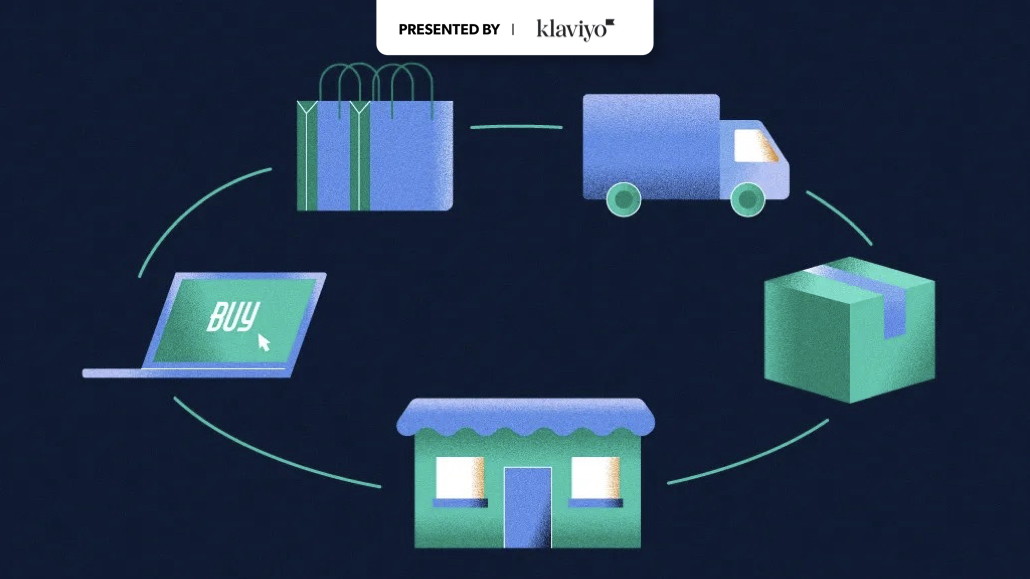At NRF, tech vendors try to catch the eyes — and budgets — of retailers

As an NRF attendee, it’s hard to walk through the Javits Center without being stopped by someone representing one of the more than 1,000 tech vendors at this year’s event, all of whom are eager to convince retail executives that they need their particular solution.
NRF’s Big Show attracted over 40,000 attendees this year, which include brands, financial firms, suppliers and analysts. Some of these attendees are eagerly wandering down the exhibitor halls looking for the latest and greatest in retail technology. Others are just here for the free food and drinks. For tech vendors, the stakes are higher: they are here to win new business — or at the very least, acquire new leads and generate buzz through their booths.
The overwhelming number of tech vendors present makes it hard to stand out. Many try to attract attendee attention with interactive experiences that attempt to show attendees how their tech would work in the real world — even though they can’t perfectly replicate a real-life environment in a giant convention center. And when in doubt, freebies can be an effective tool in getting people to pause at a booth.
This year’s vendors are spending the event demoing tech that ranges from automated drive-through and Just Walk Out technology, to facial recognition and point-of-sale systems. During day one of NRF, there was a consistent wait to order a pizza from the PizzaBot by Middleby. Others crowded around Amazon’s booth displaying its Just Walk Out technology, hoping to bypass long lines at other food stands. And with seemingly every business under the sun trying to brand itself as a tech company these days, NRF is no longer limited to just traditional retailers. Domino’s, for example, was on site to sell restaurants on its B-to-B pizza distribution technology.
A vice president at one startup, an AI analytics tool geared at physical retailers, said it can be difficult to pique the interest of potential clients. Namely, he said, it’s hard for a company to lure people in when its banner isn’t covered with logos of your existing retail partners. “There is a lot of noise , but hopefully we can get some intros while we’re here,” the executive said.
At NRF, many attendees like to check out cutting-edge demos and novelty solutions, like the pizza-making robot, alongside practical software, said John Clear, senior director in the consumer and retail group at Alvarez & Marsal. “The evolution of NRF over the years has resulted in the event being more tech-focused, with giants like SAP and Microsoft coming to show off their innovations,” Clear said.
Admittedly, Clear said, “there is a gap between these innovations and what the retailers actually need,” adding that “this is not unique to NRF,” with many conferences now incorporating tech startup booths. Moreover, Clear noted floor demos like grocery store walk-throughs “are super controlled and so it doesn’t feel like real life.” Eventually, some of the applications of these tech can trickle down and get applied in some way. And while some vendors implement gimmicks to draw attention among rows of booths, Clear said, “it’s a hook to get people to come to your booth, so you can then talk to them about the other realistic services you provide.”
But this also means that for smaller bootstrapped companies, it can be tough to compete with the flashy demo installations next door.
For example, the founder of one vending machine vendor — which is exhibiting in the Foodservice Innovation Zone — is hoping convenience and grocery store operators will take notice of the technology in the coming days. Even if the conversations don’t immediately result in any deals, it’s worth having introductions and reconnecting with those visitors at a later date. “Ideally, it can potentially lead to setting up a meeting,” the founder said.
Indeed, the biggest trick is to grab the attention of major chains, Clear said, which is much easier to do when there is free food or drinks involved.
“The ROI on these events gets kind of murky,” Clear said, “because being here is table stakes for these companies but you do have to get actual connections to justify the spend.” In some cases, returning home with a few business cards is good enough. However, he added that connecting with visitors from other parts of the building and inviting them personally is typically more effective than waving hands at those walking by.
“Sure, some of them go a little over the top,” Clear said. But overall, NRF organizers are trying to strike a balance between keeping retail executives and tech executives excited, and eager to come back to next year’s event.

